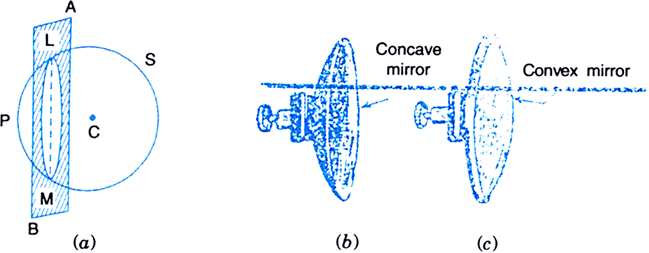
Here, P = + 1.5 D![]()
![]()
As the focal length is positive, the prescribed lens is converging.
Spherical mirrors are of two types:
(i) Concave mirror: A spherical mirror is concave if it is silvered on the outer bulged surface and reflects light from the inner hollow surface [Fig. (b)] .
.
Fig. (a) A spherical shell cut by a plane surface, (b) concave mirror, and (c) convex mirror.
(ii) Convex mirror: A spherical mirror is convex if it is silvered on the inner hollow surface and reflects light from the outer bulged surface.
We are given a concave mirror.
Here,
Object size, h = + 7.0 cm
Object distance, u = - 27 cm
Focal length, f = - 18 cm
Image distance, v = ?
Image size, h' = ?
Now, using the mirror formula,
i.e.,
The screen should be placed at a distance of 54 cm on the object side of the mirror to obtain a sharp image.
Magnification,
Image size,
The image is real, inverted and enlarged in size.
